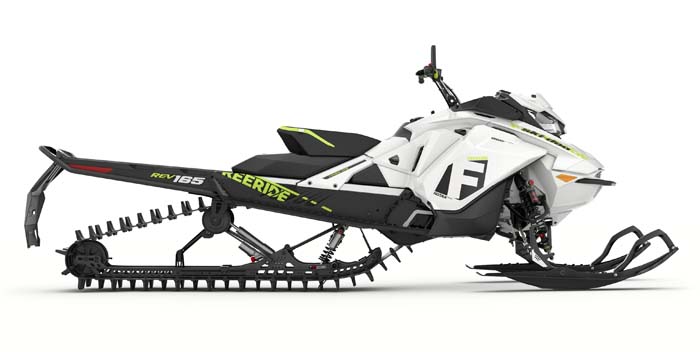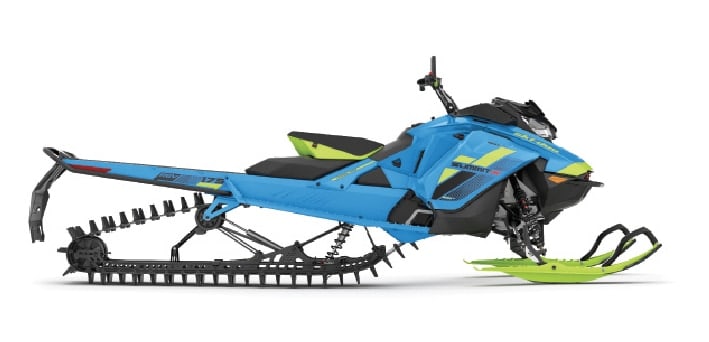


This has been brought up several times since Ski-Doo announced their new 850 G4 Freeride models with a 36” front end and reinforced chassis, so it’s a really good question.
The easy explanation is the Freeride is to the Summit what the X-RS is to the MX Z or Renegade. The Freeride is the Summit X-RS, built one notch tougher, calibrated one notch more aggressive – but, the Freeride had a wider front end than the Summit. That’s why in the past, most of the Freeride buyers were competitive hillclimbers running in a circuit or they were guys who like big drops and jumps. These machines featured some of the best shocks we have ever experienced in the backcountry, but because the Freeride came with a wider front end most backcountry riders opted for the Summit with the 36” front end. The fact is most Backcountry guys have never even thrown a leg over a Freeride so they have no idea how well the piggyback clicker shocks handle the big bumps and hits.

The competitive hillclimb scene has recently changed as many of the pros are now using a narrow front end, so for 2018 Ski-Doo will offer several versions of the Freeride – two of which will have the narrower (and still adjustable) 36” front end. That’s great news for the backcountry guys because we finally get the high-end KYB piggyback clicker shocks on a narrow front end. In fact, you can get it in both a 154” and 165” track length with the narrow front end and a 3” lug height which basically turns it into a Summit with factory race shocks. For us this is a big deal because most of the terrain we access requires us to ride through a decent amount of rough whooped out unmaintained trail.

The debate comes down to two factors; handling and money. Do I lay down the coin for the high end shocks or is the Summit X more suited for my riding conditions? The good thing is both will work for the majority of consumers but each machine does have a set of conditions that it shines in.

Freeride
The Freeride is for the rider who has to access the backcountry through rough unmaintained trails for more than just a short distance. They often approach obstacles with high rates of speed or they like to air it out so they need optimal anti-bottoming resistance. For some they just like the adjustability of a piggyback shock with separate Compression and Rebound adjusters which gives them the ability to fine tune for weight or conditions. But keep in mind because this sled features stiffer suspension it will be more stable and take slightly more rider effort roll into the hill.
Summit X
The Summit X is for the rider who may prefer the lower cost and simplicity of the monotube HPG Plus shocks. He/she rarely encounters rough woops or high speed g-outs and even if they do encounter the occasional whooped out section, the Summit still handles them well. If you like the machine to roll into the hill as easy as possible, the slightly softer suspension of the Summit would be the better choice. Having no knobs makes it simple, and some people like simple. Others want adjustability, which the Freeride has.

We think the majority of riders will eventually have to deal with rough bumps and even though the Freeride piggyback shocks are roughly a $1K upgrade, they are worth the money. There are many aftermarket companies building high end bolt on shocks that work well and we have played with almost all of them. We can honestly say that the new shocks that come on the Freeride will compete with most any and all of them.
We can’t stress enough how good these shocks are – KYB Pro 40s in the rear with compression adjust, KYB Pro 36 Rs up front with both compression and rebound adjustability, for extreme capability and extreme durability. We have praised Ski-Doo over the last several years for how well the Summit rides, but the new Freeride offers a new experience to the enthusiasts who have always wanted an even better big bump mountain sled. Now you actually can have your cake (narrow front end) and eat it (good shocks), too.
By Dustin Pancheri – SnowTech Mountain Test Staff
Want more great Snowmobile articles and information like this? Subscribe to SnowTech Magazine here.






No comments so far.
Be first to leave comment below.